Making the Scene in the Garden State: Popular Music in New Jersey from Edison to Springsteen and Beyond
Autor Dewar MacLeoden Limba Engleză Hardback – 13 mar 2020
Preț: 231.18 lei
Nou
Puncte Express: 347
Preț estimativ în valută:
44.26€ • 45.54$ • 37.31£
44.26€ • 45.54$ • 37.31£
Carte disponibilă
Livrare economică 08-22 februarie
Livrare express 25-31 ianuarie pentru 28.78 lei
Preluare comenzi: 021 569.72.76
Specificații
ISBN-13: 9780813574660
ISBN-10: 0813574668
Pagini: 206
Ilustrații: 20 images; some color
Dimensiuni: 152 x 229 x 23 mm
Greutate: 0 kg
Ediția:None
Editura: Rutgers University Press
Colecția Rutgers University Press
ISBN-10: 0813574668
Pagini: 206
Ilustrații: 20 images; some color
Dimensiuni: 152 x 229 x 23 mm
Greutate: 0 kg
Ediția:None
Editura: Rutgers University Press
Colecția Rutgers University Press
Notă biografică
Dewar MacLeod is professor of history at William Paterson University in Wayne, New Jersey, specializing in popular culture, American Studies, and U.S. foreign policy, and the author of Kids of the Black Hole: Punk Rock in Postsuburban California, the first study of punk by a professional historian. He is singer/guitarist for Thee Volatiles, the best punk rock band in Montclair, New Jersey.
Extras
Beyond its reputations as the suburban outpost to Manhattan, the industrial wasteland, the barren swamps and pinelands where gangsters dump their victims, propagator of the tacky and déclassé, pathway between far more interesting locales, New Jersey has been home to vital and exciting scenes of musical production and enjoyment.
New Jersey deserves its own musical history. The state has been home not simply to musicians who were born there but went off to make their fame in the bright lights of the big city. The state has fostered and grown local scenes of musical and historical import. Certainly, the location on the outskirts of major cities at the northern and southern ends has factored into New Jersey’s influence. But this book will explore the homegrown and nurtured musical production and consumption in New Jersey. This book will fill in the historical record, including some vibrant and important musical moments that have not received their due attention. But, even more than claiming historical space for these musical productions as worthy of inclusion in some sort of musical hall of fame, I am interested in the social history of how people produce and consume music. For that, the organizing conceit of this book is the concept of scenes.
I use the term “scene” to discuss a variety of types of historical groupings of people around music, “the contexts in which clusters of producers, musicians, and fans collectively share their common musical tastes and collectively distinguish themselves from others." Over the last few decades, scholars have explored, “… the production, performance, and reception of popular music. Work in the scenes perspective focuses on situations where performers, support facilities, and fans come together to collectively create music for their own enjoyment.” The term itself is malleable, even slippery, used as it is by participants, journalists, and scholars, often in very different ways.
New Jersey deserves its own musical history. The state has been home not simply to musicians who were born there but went off to make their fame in the bright lights of the big city. The state has fostered and grown local scenes of musical and historical import. Certainly, the location on the outskirts of major cities at the northern and southern ends has factored into New Jersey’s influence. But this book will explore the homegrown and nurtured musical production and consumption in New Jersey. This book will fill in the historical record, including some vibrant and important musical moments that have not received their due attention. But, even more than claiming historical space for these musical productions as worthy of inclusion in some sort of musical hall of fame, I am interested in the social history of how people produce and consume music. For that, the organizing conceit of this book is the concept of scenes.
I use the term “scene” to discuss a variety of types of historical groupings of people around music, “the contexts in which clusters of producers, musicians, and fans collectively share their common musical tastes and collectively distinguish themselves from others." Over the last few decades, scholars have explored, “… the production, performance, and reception of popular music. Work in the scenes perspective focuses on situations where performers, support facilities, and fans come together to collectively create music for their own enjoyment.” The term itself is malleable, even slippery, used as it is by participants, journalists, and scholars, often in very different ways.
Cuprins
Introduction: Making Scenes
1. Thomas Edison and the First Recording Studio
2. The Victor Talking Machine Company and the Scene at Home
3. Jazz at the Cliffside: The Studios of Rudy Van Gelder
4. Transylvania Bandstand and Rockin’ with the Cool Ghoul
5. The Upstage Club and the Asbury Park Scene
6. “Drums Along the Hudson”: The Hoboken Sound
Conclusion: Making the Scene in the Twenty-First Century
Acknowledgments
Notes
Index
1. Thomas Edison and the First Recording Studio
2. The Victor Talking Machine Company and the Scene at Home
3. Jazz at the Cliffside: The Studios of Rudy Van Gelder
4. Transylvania Bandstand and Rockin’ with the Cool Ghoul
5. The Upstage Club and the Asbury Park Scene
6. “Drums Along the Hudson”: The Hoboken Sound
Conclusion: Making the Scene in the Twenty-First Century
Acknowledgments
Notes
Index
Recenzii
"An engrossing read for anyone interested in the development of popular media, popular music, and American society as a whole."
"In many ways, MacLeod hits his finest notes [by] providing readers with useful miniature stories about the lives and times of Jersey Shore musicians and their audiences. Chock-full of new information and helpfully resourced with the fruits of countless interviews, Making the Scene in the Garden State should enjoy a large audience both for the book's scholarly value, as well as for its engaging anecdotes about New Jersey's role in changing American musical culture for all time."
"MacLeod offers a useful local cultural history that will enrich understanding of twentieth-century America for undergraduates and general audiences alike. Meanwhile, professional scholars can add Making the Scene in the Garden State to their list of works that shine a light into the nation's unjustly overlooked corners."
"The New Jersey music stories told in these pages are often punctuated by chance occurrences, dumb luck, unexpected brilliance, and a little magic. They also give us a view into the bigger patterns of cultural and historical change that are far more than a local matter. From MacLeod's 'scenes' come bigger shifts. Read this and be reminded of the ways in which popular (and sometimes unpopular!) music and the people who make it, listen to it, and dream through it do things out there on the margins that, finally, reshape the center."
Descriere
Making the Scene in the Garden State explores New Jersey’s rich musical heritage through stories about the musicians, listeners and fans who came together to create sounds from across the American popular music spectrum. From the beginnings of recording in Thomas Edison’s factories to Bruce Springsteen’s early years at the Upstage Club, and beyond, the book examines the sounds, sights and textures of music scenes in New Jersey.


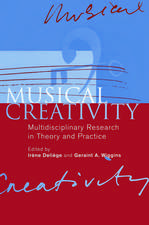


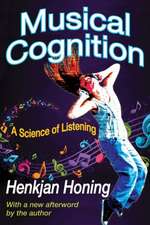

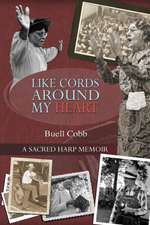
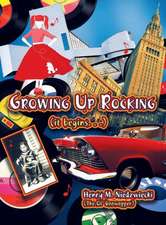
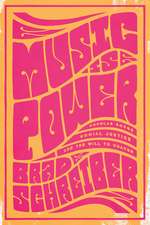






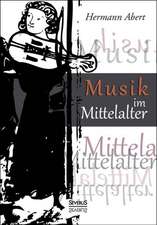
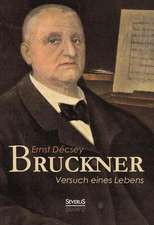


![Johann Sebastian Bach's Art of Fugue: Performance Practice Based on German Eighteenth-Century Theory [With Score]](https://i0.books-express.ro/bt/9789058679406/johann-sebastian-bach-s-art-of-fugue.jpg)